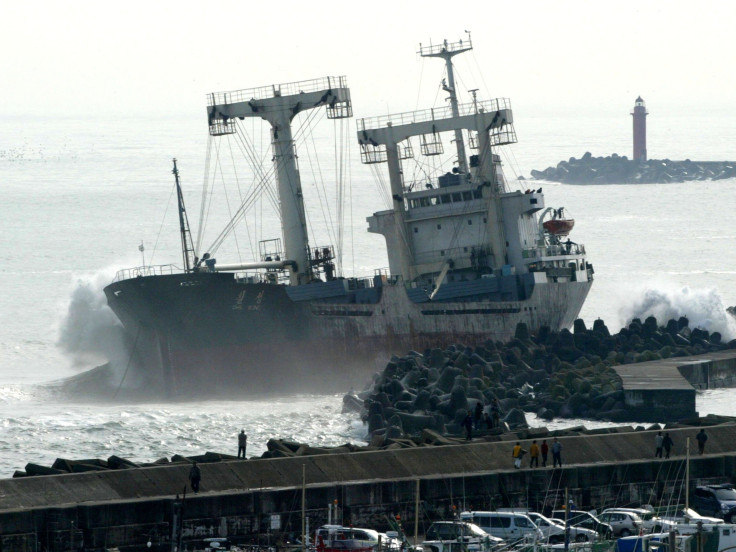North Korea Illegally Buying Oil From China, Satellite Images Suggest

North Korean vessels were spotted on the West Sea engaging in illegal oil trades with Chinese ships multiple times in October, by the United States reconnaissance satellites.
The images in question were recorded Oct. 19, before the latest sanctions on North Korea, which limits oil product shipments to just 500,000 barrels a year, went into effect. It showed a North Korean vessel named Ryesonggang 1 connected with a Chinese ship. Regardless, the trade of such a nature was deemed illegal by the U.S. government.
According to the official report of the incident by the U.S. Department of the Treasury, “North Korea is known to employ deceptive shipping practices, including ship-to-ship transfers, a practice prohibited by United Nations Security Council Resolution (UNSCR) 2375 of September 11, 2017.”

The report went on to mention the ship-to-ship transfer was most possibly of oil, done in an attempt to evade the sanctions placed on the North Korean leader Kim Jong Un’s regime.
In order to crackdown on Pyongyang’s efforts to engage in illegal trade, six North Korean shipping and trading companies and 20 of their ships were placed on sanctions by the treasury department Nov. 21.
Chosuilbo, a South Korean news outlet, quoted unnamed government officials of their country, who identified the ships – seen in the satellite images – as vessels from China and North Korea, engaging in illegal trade. The officials also added the trade was taking place in the part of West Sea which was closer to China than South Korea.
“We need to focus on the fact that the illicit trade started after a U.N. Security Council resolution in September drastically capped North Korea's imports of refined petroleum products,” one South Korean government source said.
While the Chinese government did not comment on authenticity of the satellite images, it categorically denied its country engaged in any oil trades with North Korea in the month of November, CNBC reported. This included a blanket ban on gasoline, jet fuel, diesel or fuel oil for a month.
“As a principle, China has consistently fully, correctly, conscientiously and strictly enforced relevant U.N. Security Council resolutions on North Korea,” Chinese Foreign Ministry spokeswoman Hua Chunying said during their press briefing Tuesday. “We have already established a set of effective operating mechanisms and methods.”
China National Petroleum Corp (CNPC), a state-run company has not exported gasoline and diesel to North Korea since June for the fear it would not get paid. In addition, China also did not import any iron ore, coal or lead from North Korea in November.
According to industry sources, China continues to be North Korea’s main source to oil, sell 520,000 tons, or 3.8 million barrels, of crude a year to its isolated neighbor, using an aging pipeline.
North Korea called the latest sanctions an “act of war” against Pyongyang that violates its sovereignty. It added the sanctions were rigged by the U.S., whose “pipe dream” was to make the country’s leader back down from its nuclear weapons program.
© Copyright IBTimes 2025. All rights reserved.






















